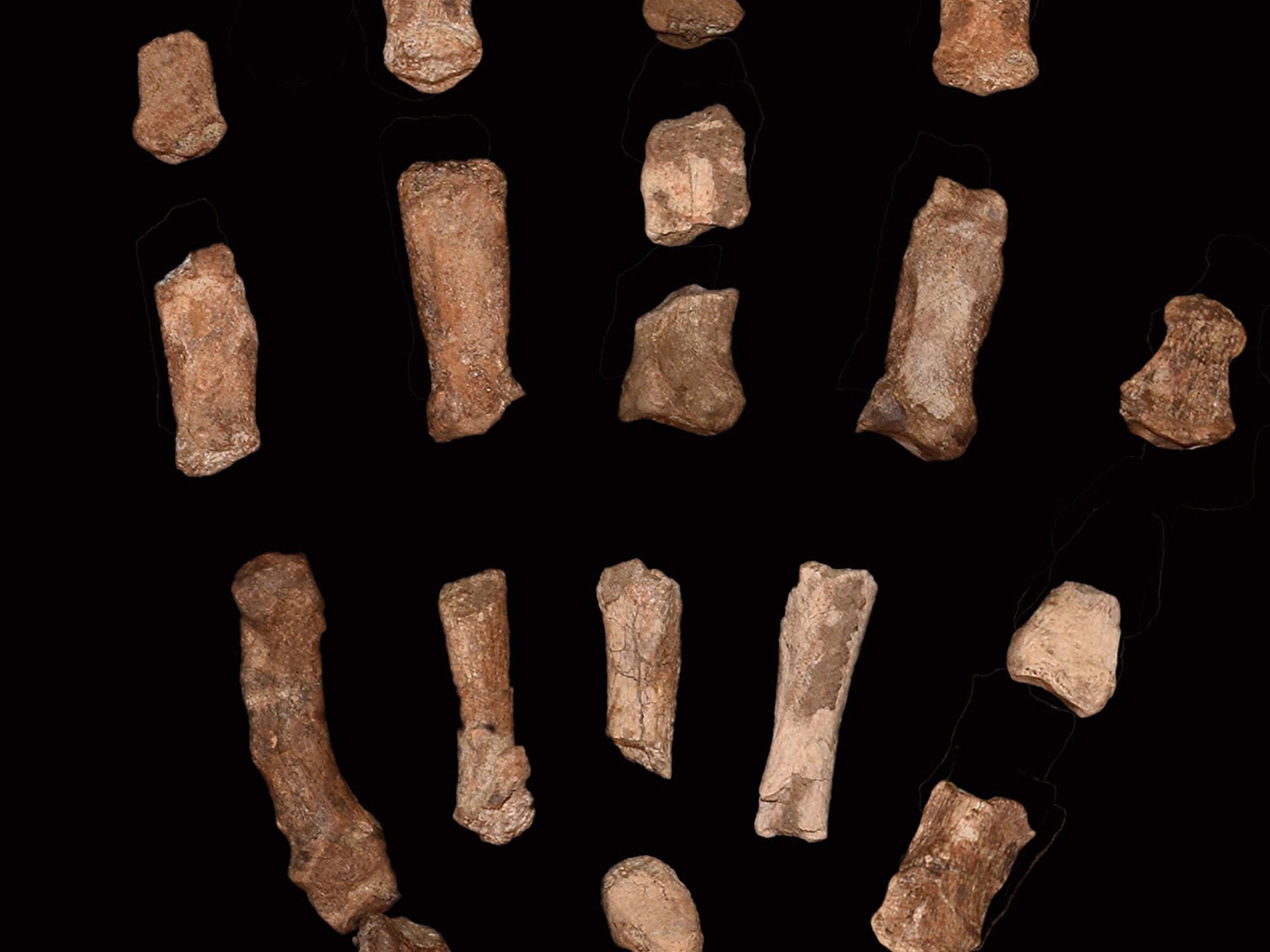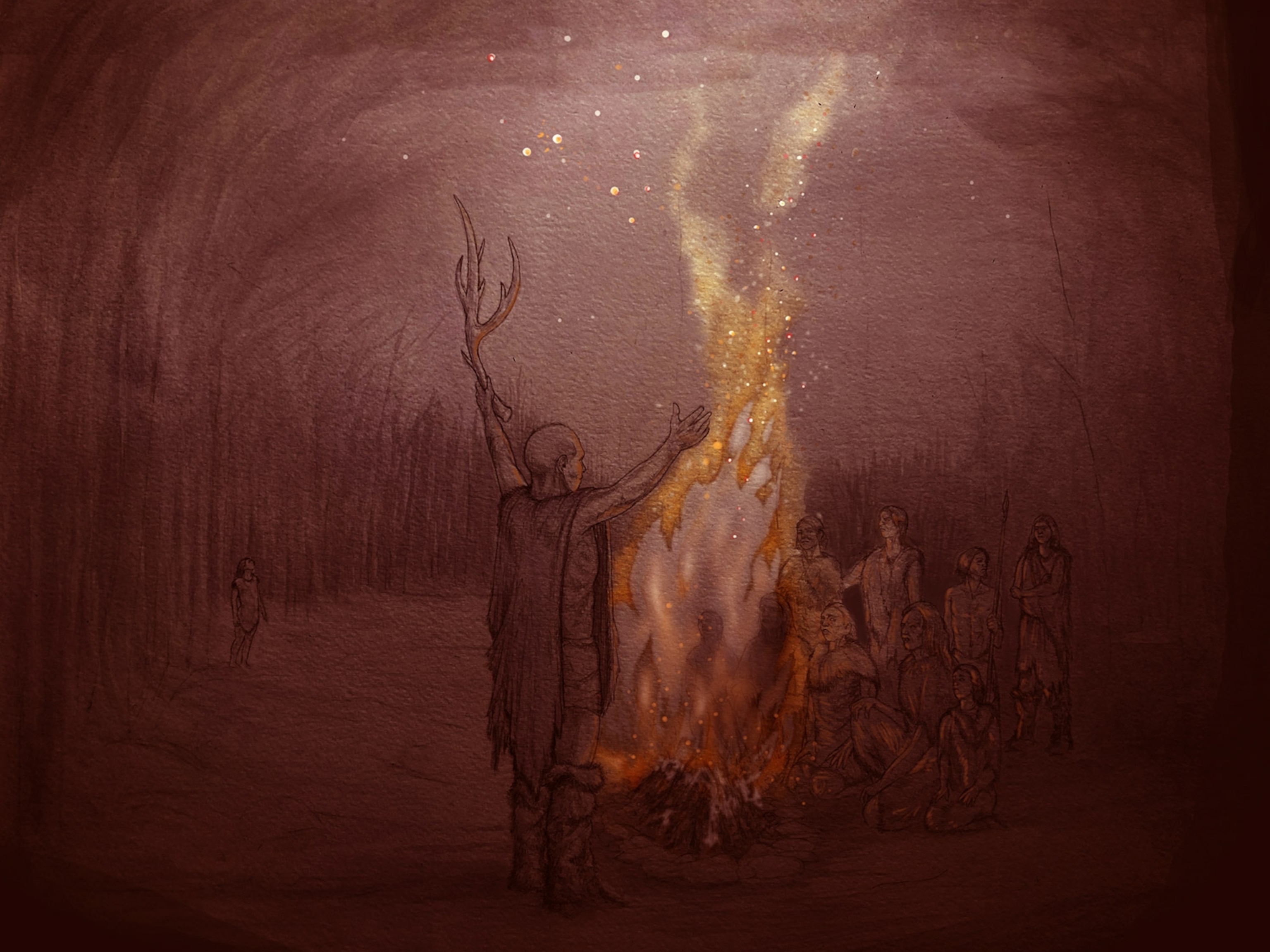
Surprise Human-Ancestor Find—Key Fossils Hidden in Lab Rock
Single tooth tipped researchers off to a bonanza right under their noses.
Last month a prehistoric tooth protruding from a boulder tipped off researchers to hidden evolutionary treasure: remarkably complete human-ancestor fossils trapped in a rock that had been sitting in their lab for years.
Scans later showed that the rock contains two-million-year-old fossils that will "almost certainly" make one Australopithecus sediba specimen "the most complete early human ancestor skeleton ever discovered," anthropologist Lee Berger said in a statement Thursday.
(See pictures of Australopithecus sediba fossils.)
The bones are nearly invisible from the outside, and were discovered only after a technician noticed the small tooth in the three-foot-wide (meter-wide) rock, which was retrieved from a South African cave in 2008 and brought to a lab at the University of the Witwatersrand in Johannesburg.
The tooth turned out to be just the tip of the fossil iceberg.
A CT scan revealed other bones inside, including parts of a jaw, a complete thigh bone, ribs, vertebrae, and possibly hand and foot bones.
"What we can see inside of the rock using state-of-the-art scanners," Berger said, "are some of the most complete bones that we've ever discovered in early hominins"—human species and their close evolutionary ancestors.
Scientists think the fossils are the missing remains of "Karabo," a partial A. sediba skeleton belonging to a male child that Berger's team had previously unearthed.
"What we found inside of this enormous rock is what appears to be the remainder of either the skeleton of Karabo or another skeleton entirely," Berger, of the University of the Witwatersrand in Johannesburg, told National Geographic News.
(Recent A. Sediba news: "Human Ancestors Ate Bark—Food in Teeth Hints at Chimplike Origins.")
"The More Bones, the Better"
A. sediba is one of the newest additions to the list of early human ancestors and also one of the most enigmatic hominins ever discovered. (See "'Key' Human Ancestor Found: Fossils Link Apes, First Humans?")
Studies have shown that the species possessed an unusual mix of primitive and or humanlike traits. For example, scientists think A. sediba could stand and walk upright but that it still spent some time in trees.
Additionally, the creature had a relatively large brain and surprisingly agile hands, suggesting the species may have been capable of crafting and using stone tools.
But there are still a lot of lingering questions about A. sediba and early hominins in general—questions that paleontologist Scott Simpson thinks the new bones could help resolve.
"One of the things we're still working out is the shape of [A. sediba's] rib cage. It's unclear how the shape of the rib cage evolved in hominins, and also what the relationship of the rib cage shape is to upper limb function," said Simpson, of Case Western Reserve University in Ohio, who's not involved in the project.
The vertebrae are also valuable finds, Simpson added, because they're relatively fragile and tend to degrade quickly or get eaten before the bones can fossilize.
"It would be nice to get these rare bones," he said. "The more bones, the better."
(Explore a graphic of the possible branches on the human family tree.)
"The World Will Find Out With Us"
In coming months, the vertebrae and other bones will be slowly freed from their rocky prison in a laboratory at the Maropeng Visitor Center in Gauteng, South Africa, which Berger's team is constructing with the help of the National Geographic Society. (National Geographic News is a division of the Society.)
The public will be able to view the entire excavation online and interact with the scientists, said Berger, who's also a National Geographic Committee for Research and Exploration grantee.
"The world is going to be able to watch and interact live as we expose this discovery," he said.
The group is also coordinating with as yet unspecified museums around the world to create virtual "outposts" where the public can go to not only watch the excavation live but also control cameras and microscopes that will be set up in the lab.
Berger said he thinks that at least some of the bones in the rock must belong to Karabo, because the exposed tooth appears to fit in the left side of a jawbone visible in the rock, which in turn looks like it fits together with a piece of jawbone that was previously excavated.
However, it's also possible that the remains belong to an entirely new A. sediba individual. Based on previous fossil finds, "we know that we have at least six individuals" in the cave, Berger said.
"And there's also the possibility that we have two bodies that are intertwined [in the rock]. Part of the fun of this project is that as soon as we find out, the world will find out with us."
Next: Find out how A. sediba could put a kink in our evolutionary tree >>





